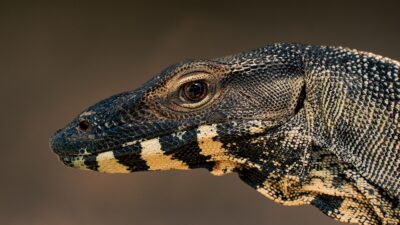In the vast tapestry of the animal kingdom, there’s no shortage of fascinating creatures. Among them, the common mouse, particularly those often regarded as pests, hides remarkable secrets that showcase nature’s ingenuity. Much more than just a small rodent scurrying across the floor, the mouse is a marvel of evolution, adaptability, and ecological importance. Let’s delve into the extraordinary life of these diminutive creatures and uncover the secrets that make them truly mighty.
Evolutionary Adaptations
The house mouse (Mus musculus) has a rich evolutionary history, having domesticated itself alongside humans for thousands of years. This symbiotic relationship has resulted in unique adaptations that allow mice to thrive in diverse environments—from urban settings to wild grasslands. Their small size and agility enable them to squeeze into tight spaces, evade predators, and exploit various food sources. Furthermore, their ability to reproduce at an astonishing rate—producing up to ten litters a year—ensures their persistence and adaptability.
One of the most intriguing adaptations of mice is their highly developed sense of smell, which they use to locate food and communicate with one another. Mice possess about 1,200 genes that code for scent receptors, more than any other mammal. This olfactory prowess not only aids in survival but also plays a vital role in social interactions, helping mice identify friends from foes through scent marking.
Ecological Significance
Mice play a critical role in ecosystems as both prey and seed dispersers. As a staple food source for numerous predators—ranging from birds of prey to snakes—mice are integral to maintaining ecological balance. By facilitating nutrient cycling and seed dispersal, they also contribute to plant community dynamics, promoting vegetation diversity.
Moreover, research has revealed that mice can significantly impact soil health. Through their burrowing activities, they aerate the ground, allowing for better water absorption and root growth. This activity is especially crucial in agricultural systems, where mice help maintain soil richness, benefiting crop production.
Behavioral Marvels
Mice are not just remarkable in their physical abilities and ecological impact; their behavioral traits further showcase their intelligence and adaptability. They are highly social animals, often seen living in large family groups. Engaging in grooming rituals, vocal communication, and cooperative behaviors, mice exhibit complex social structures that emphasize their capability for forming bonds and alliances.
Interestingly, studies have demonstrated that mice can display empathy and altruism. For instance, when one mouse is in distress, others may exhibit behaviors that provide comfort and aid. This social intelligence is often seen within their diverse communities, hinting at an emotional depth that challenges the common perception of rodents as mere pests.
Scientific Contributions
Mice hold a prestigious place in scientific research, particularly in genetics and biomedical studies. As mammals sharing approximately 95% of their genetic makeup with humans, they are invaluable models for understanding human diseases, genetic disorders, and the effects of environmental changes.
Through groundbreaking studies leveraging CRISPR technology and other advancements, researchers have used mice to unravel the complexities of cancers, diabetes, and neurological disorders. The insights gained from these studies not only pave the way for potential treatments but also highlight the importance of ensuring healthy ecosystems, where mice and their habitats thrive.
Conservation and Coexistence
Understanding the significance of mice in our ecosystems prompts a call for coexistence rather than eradication. While urban populations often view them as nuisances, fostering a healthier attitude towards these small creatures can benefit both humans and wildlife. Advocating for humane pest control methods, encouraging gardens that support rodent biodiversity, and preserving natural habitats will strengthen the ecological fabric we share.
Conclusion
The mighty mouse is anything but insignificant. From their evolutionary adaptations to their ecological roles and contributions to science, these small marvels reveal complex patterns of life and interconnectedness. By learning to appreciate and understand the importance of even the smallest creatures, we can foster a more harmonious relationship with nature. In every scurry and squeak, the mouse carries within it the secrets of survival, resilience, and a delicate balance that sustains our planet.



